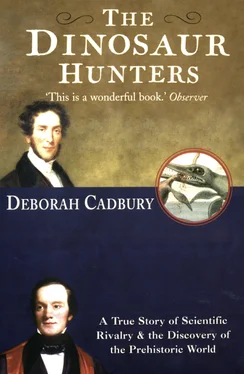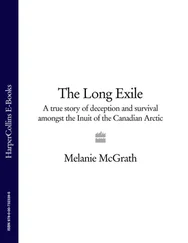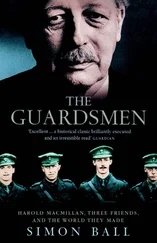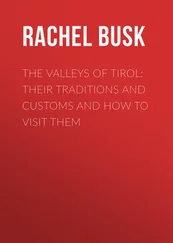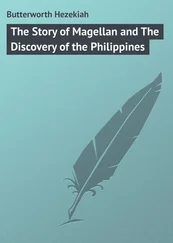In his first paper to the Royal Society in 1814, Sir Everard initially favoured the idea that Mary Anning’s creature was some kind of crocodile. This was because he had noticed small germs of conical teeth contained within the larger teeth. Whereas mammals have just two sets of teeth, the milk teeth and the adult teeth, reptiles have replacement teeth growing through the jaw all their lives. But when Sir Everard split one of the teeth open, he mistook the young germ tooth inside for an accumulation of calcareous minerals. ‘The characteristic mark therefore, of a crocodile’s teeth,’ he wrote, ‘was thus removed.’ He wrongly concluded that it was not a reptile.
Then he reasoned that it must be an enormous aquatic bird, since the pattern of openings in the skull of the creature was similar to that of birds. The bones of the eye, he wrote, ‘subdivided into thirteen plates, which is only met in birds’. But if it was a bird, where were the wings, and why so many fish-like characteristics? Sir Everard considered that the lower jaw of the skull ‘admits the mouth to be opened to a great extent … resembling the voracious fishes’. New specimens revealed the ‘bird’ had paddles for swimming, and he decided the creature belonged to the class of fishes; although, somewhat baffled, he wrote, ‘I by no means consider it wholly a fish.’
After his initial uncertainty over whether the beast should be classed as reptile, bird or fish, by 1819 Sir Everard thought he had solved the puzzle. A new creature called a ‘Proteus’ had just been described in English by a Viennese physician. This was a blind, amphibious, serpentine creature with very unusual anatomical features that inhabited caves. Mistakenly guessing that the Lyme ‘crocodile’ was a link between the Proteus and lizards, he named it ‘Proteosaurus’, or ‘Proteus-lizard’. However, the year before, Mary Anning’s creature had been sold to the British Museum, where the Keeper of Natural History, Charles Konig, had named her animal ‘Ichthyosaurus’ , meaning ‘fish-lizard’. This was in recognition of its curious mixture of fish and reptile characteristics. Since this name had been put forward first, it had priority over any other. Sir Everard Home was furious, and he continued to promote his own rival name, ‘Proteosaurus’.
In all this confusion, one thing was clear: the French were laughing at the English grasp of anatomy. Joseph Pentland, in Cuvier’s laboratory, scoffed at the papers of the ‘London Baronet’, as he called Sir Everard. He wrote to William Buckland in Oxford saying that Sir Everard’s ‘ridiculous’ papers were ‘abstruse, incomprehensible and for the most part, uninteresting’. What is more, the London Baronet was ‘crowding’ the Philosophical Transactions of the Royal Society, the prestigious journal of the oldest scientific society of Europe, blocking the publications of others whose work was more ‘worthy and honourable’.
Possibly because Sir Everard dominated the Royal Society, Buckland’s friends, the Reverend Conybeare and another enthusiastic young geologist, Henry de la Beche, prepared their detailed scientific paper on Mary’s creature for the Geological Society. They gathered many more specimens from Lyme and the Bristol area and were also able to capitalise on the anatomical expertise of the French. ‘I am sure that the fossil approaches much nearer to the family of Saurians [lizards],’ wrote Pentland to Buckland in 1820. ‘The dentition of the Ichthyosaurus is the same as in lizards.’
Conybeare and de la Beche published their findings in 1821. In agreement with the French, they showed that the teeth of the animal bore more resemblance to those of a crocodile than to any other creature. The replacement cycle of teeth so characteristic of a reptile, with ‘the young tooth growing up in the interior cavity of the old one,’ wrote Conybeare, ‘is exactly similar’. The bones of the skull were also lizard-like, with two openings at the back behind the eye, lightening the skull and allowing the muscles of the jaw to bulge so that it could work more efficiently. In the lower jaw alone, all the bones that Cuvier had identified in a crocodile could also be seen in this animal.
There were, however, some differences between Mary’s fossil and a crocodile skull. The teeth, Conybeare observed, ‘are more numerous than in the crocodile, there cannot be less than 30 a side’. The huge round eyes were larger in proportion to the skull than the eyes of any other known animal. Having no eyelids, to prevent injury in a rough sea, it had instead many thin, flexible bones encasing the pupil to protect it. The general shape of the jaw, he thought, ‘differs from the crocodile in being much more lengthened’, and ending in a point ‘almost as sharp as the beak of a bird’. Nonetheless, in both the dentition and the bone structure the animal ‘approaches more closely to the Saurian or Lizard family, and especially to the genus Crocodile,’ said Conybeare, ‘than to any other recent type’. The fossil beast, therefore, belonged to the reptile class and the saurian family.
Despite this, it had many characteristics of fishes. The vertebrae were just like those of a fish, with small, flat discs allowing enormous flexibility of the spine. The bones were also very light, combining the ‘greatest strength with least weight’, which would ‘increase the buoyancy of the animal and enable it to face the waves of an agitated ocean’. With eighty or ninety such vertebrae, the creature could reach twenty-four feet in length. In view of its fish and lizard affinities Conybeare accepted the name Ichthyosaurus, or ‘fish-lizard’, to denote the genus. While tactfully acknowledging the ‘praise worthy readiness’ with which Sir Everard had communicated his ideas ‘instantly to the public’, his ‘Proteosaurus’ was quietly forgotten. Ichthyosaurus, said Conybeare, roamed the primitive seas ‘upon which no human eye ever rested’. He tried to trace the boundaries of this long-buried sea by seeing how far the fossil remains extended across England. They found ichthyosaurs in many counties in South-west England deposited within the Secondary strata.
As Conybeare and de la Beche searched the Secondary rocks, they came upon other bones, principally vertebrae, which did not quite match those of Ichthyosaurus or of a crocodile. ‘I was persuaded that they had all belonged to different places in the vertebral column of a single species,’ wrote Conybeare. He began to suspect that another unknown sea lizard had shared the ancient ocean with the ichthyosaurs. He proposed the name ‘Enalo-sauri’, or ‘sea lizards’, to denote the whole order, and hinted strongly that more types of these giant sea creatures had yet to be uncovered. The paper was seen as a triumph, and their description of the ichthyosaurs stands to this day.
As for Mary Anning, she hadn’t the education or the position in the world to name her finds or to use them as an entrée to the male-dominated world of science. She was not even named in the scholarly papers on her creature published in London. In her cottage by the sea or sitting on the shore at Lyme, she painstakingly copied out the learned articles in her own hand, making drawings and trying to grasp the language of the new science. There is even a suggestion that she may have tried to learn French in order to read Cuvier for herself. With many French visitors to the port of Lyme, this was not such an impossible feat.
Mary was sufficiently encouraged by her first discovery to persevere in her daily searches on the shore, braving all weathers. The deplorable conditions of five years’ parish relief focused her efforts tremendously as, according to one collector, Thomas Hawkins, she ‘explored the frowning and precipitous cliffs, when the furious spring-tide conspired with the howling tempest to overthrow them, and rescued [fossils] from the gaping ocean, sometimes at the peril of her life’. The dangers Mary faced were also noted by a gentleman’s daughter, Anna Maria Pinney, who sometimes explored the cliffs with her: ‘we climbed down places, which I would have thought impossible to have descended had I been alone. The wind was high, the ground slippery, and the waves beating against Church Cliff. When we had clambered to the bottom our dangers were by no means over … In one place she had to make haste to pass between the dashing of two waves … she caught me with one arm round the waist and carried me some distance.’
Читать дальше
